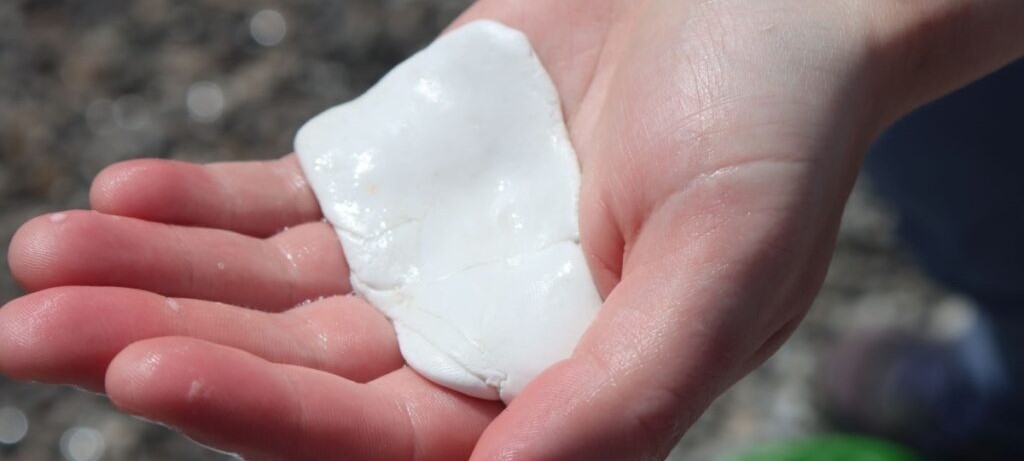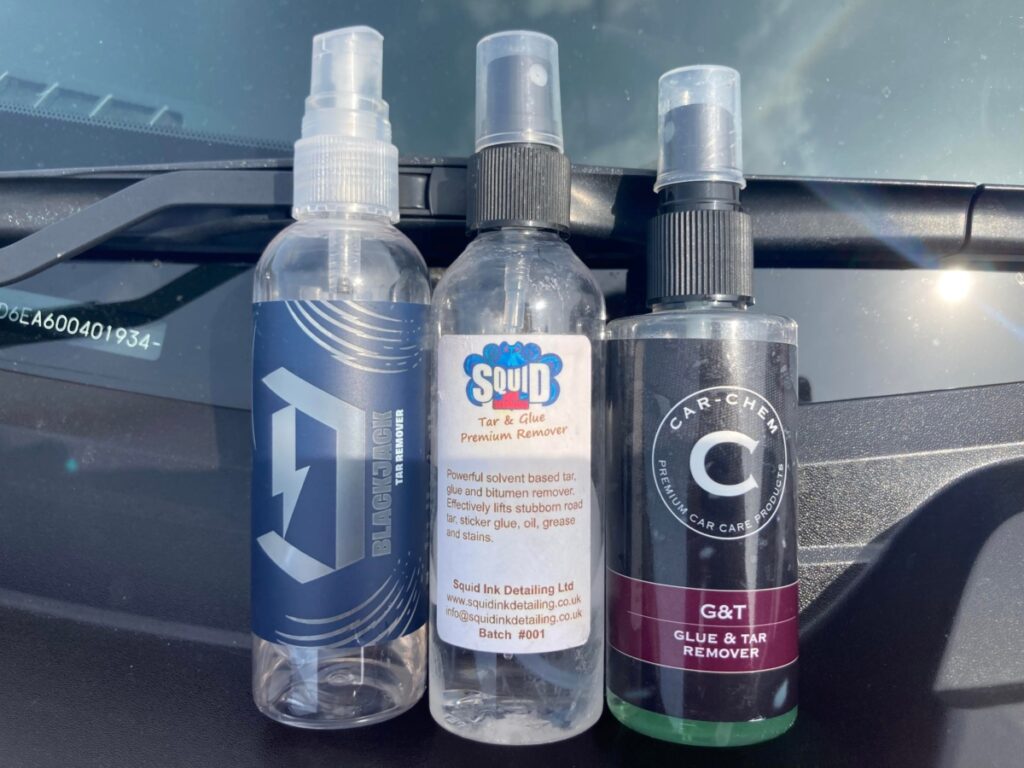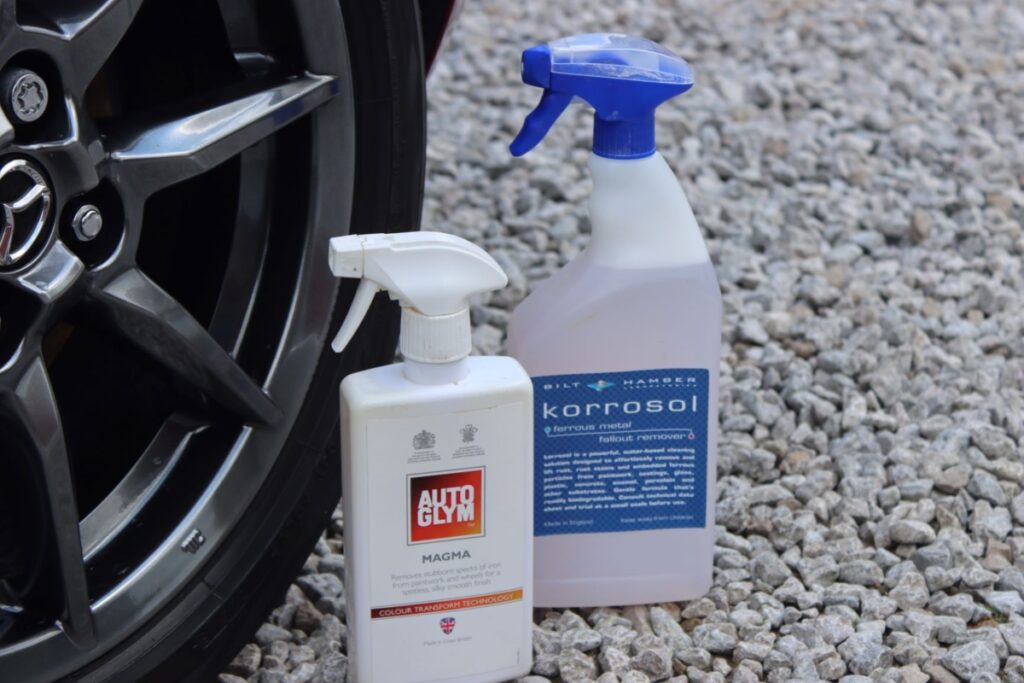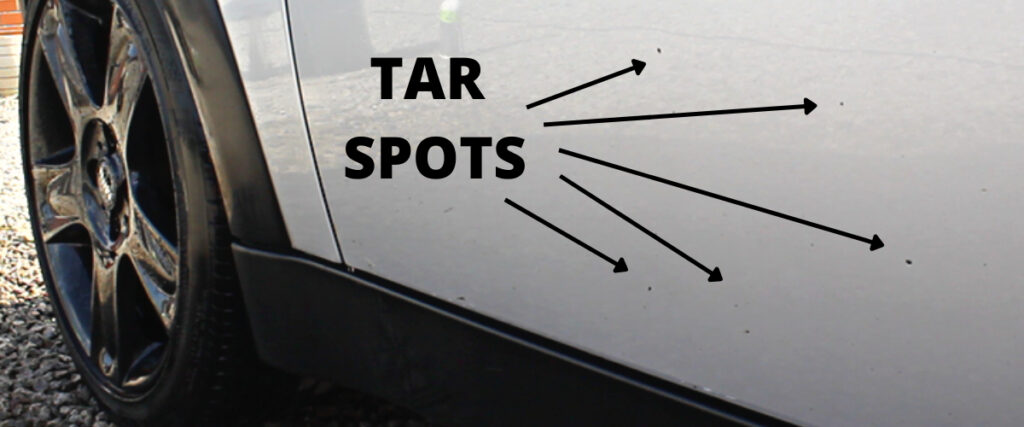Decontaminating a car isn’t the most fun job in the world, but it’s essential if you want to get the paintwork in the best condition. There are three types of products generally used to perform the decontamination step: iron removers, tar removers and clay. But do you need all three or does clay do it all?
In this article, I’ll explain why using clay to remove tar and iron fallout deposits isn’t recommended and why you shouldn’t skip using chemical removers as well.
The Quick Answer
Clay bars are capable or removing tar and iron fallout, however it is best to use dedicated tar and iron fallout remover chemicals prior to claying to remove these types of contaminants. This helps to reduce the amount of swirling and marring inflicted during the clay process by keeping the clay cleaner.

Function of Detailing Clay
Clay comes in a variety of forms including bars, cloths, blocks and mitts. It is an abrasive substance used to remove contaminants which are bound or embedded into the car’s paint or glass which it cause it to feel rough.
The most common types of bound contaminants include:
- Tar
- Iron fallout deposits
- Tree sap
- Dried bugs
- Mineral deposits (water spots)
- Overspray

These contaminants cannot be removed by routine washing and must be removed via the process of decontamination. This is a vital step before machine polishing and ceramic coating a car, and also helps to make the car look cleaner and extends the life of waxes and sealants.
Clay is capable of removing these bound contaminants due to its abrasive nature which essentially “shaves” them away. It is also sticky so is capable of pulling these contaminants out of the pores of the paint to create a smoother surface.
Chemical vs Physical Decontamination
There are usually two steps performed when doing a “full” decontamination of a car’s paintwork.
- Chemical decontamination e.g. iron fallout remover and tar remover
- Physical decontamination e.g. clay bar
The chemical decontamination stage involves using two chemicals to remove two specific bound contaminants: tar and iron particles.


Tar or bitumen spots usually build up on the lower sections of the car behind the front wheel, and on the rear of some types of cars like hatchbacks and SUV’s. This happens more frequently if the car is driven on newer roads which haven’t completely dried.
Iron particles can also become embedded in the clear coat which are invisible in most cases, but large deposits will be orange or dark brown in color. These iron deposits can be collected if the car is kept near a trainline or in an industrial area. It can also build up behind the wheels due to the brake dust that is created in this area.
A clay bar is capable of removing iron fallout particles and tar spots, however the chemical decontamination step is usually performed first for three main reasons.
- It reduces the level of swirling and marring inflicted by the claying process
- It helps to preserve the life of the clay
- Clay is not as effective at removing tar spots
Let’s take a look at each reason in a bit more detail.
Reason #1 It Reduces the Level of Swirling and Marring
Clay is an abrasive substance which means it will cause some damage in the clear coat of the car. This is incredibly difficult to avoid and comes as part of the process, so it’s why a car should only be clayed when absolutely necessary and not as part of a routine.
The amount of marring and swirling inflicted by the clay bar depends on the following main factors (not in order of priority):
- The amount of lubrication used to clay the car. Using a good lubricant (not just water) will help reduce the amount of clear coat damaged inflicted. Check out my guide to the best clay bar lubricants to learn more.
- How much pressure is used to clay the car. The less pressure used, the less marring will occur.
- How hard/ soft the clay bar is. Some brands offer clays with different hardness levels to suit different amounts of contamination)
- How soft/ hard the paint is. Some cars are more susceptible to damage than others).
- How much contamination is present on the vehicle.
- How clean the clay bar is.
Avoiding using clay to remove tar and iron deposits by using dedicated iron and tar removers first helps to reduce the risk of inflicting clear coat damage due to factors #5 and #6 in the list above.
Using these dedicated chemicals to remove some of the bound contamination before claying will mean there are fewer contaminants for the clay bar to pick up. This means that the clay bar will stay cleaner for more of the process.
The cleaner the clay bar is, the less swirls and marring will be induced. Remember, it’s not just the clay that’s abrasive, but the contaminants being picked up on the clay bar!
Reason #2 It Helps to Preserve the Life of the Clay
This reason is related to the reason described above.
The fewer contaminants on the car, the cleaner the clay bar will stay and the longer it can be used on the paintwork.
You can of course keep flipping the clay bar more frequently to keep it cleaner, but it comes to a point where there will be too many contaminants on the clay and it will need to be replaced with a fresh piece to avoid inflicting unnecessary damage on the paintwork.
That’s why reducing the amount of contamination present in the first place is a more effective and efficient way to decontaminate the car.
Tar is particular clogs up the clay bar very easily meaning it will need to be replaced more often. Removing the tar spots first using a dedicated tar remover will prevent this from happening.
Reason #3 Clay Is Not as Effective at Removing Tar Spots
Whilst clay bars are pretty good at removing iron fallout from the paintwork, and the main reasons to use an iron fallout remover chemical first are to reduce the risk of marring and swirls by keeping the clay cleaner, the same can’t be said for tar spots.
Tar spots are very stubborn and can be difficult to remove using clay, particularly if they have been left on the paintwork for a long period of time. Using a dedicated tar remover is much more efficient and effective to remove stubborn tar spots instead of clay.

Not only will it speed up the process, but it also helps to prevent the clay bar getting clogged up, and reduces the amount of marring inflicted since the area won’t need to be clayed as aggressively.
Using Tar and Iron Removers
Here’s a quick guide to chemical decontamination. With both products, make sure you follow the manufacturer’s instructions to the letter and never use them in direct sunlight or allow them to dry on the surface.
Tar Removers
- Tar removers work best on dry paint so should be used after the car has been washed and dried.
- Inspect the paintwork for tar spots. These are usually on the panels behind the wheels.
- Simply spray onto the tar spot, leave for the recommended time (usually 2 minutes).
- Then, take a damp microfiber towel and gently wipe the tar spot away.
- Rinse the car to remove residue and then wash and dry the area.
- Some stubborn tar spots may require the process to be repeated.

Iron Fallout Removers
- Iron fallout removers work best on dry paintwork so you should wash and dry the panel before application.
- Spray the product over the paintwork and leave to dwell for the recommended time (usually 2-5 minutes).
- You’ll notice a reaction occurring as the particles turn purple.
- Then simply rinse off.
- You can also check the product has worked by using the iron fallout remover again on a section and observe if there is a reaction. Sometimes the vehicle may require multiple hits of the product.

It Is Not Always Necessary to Clay the Car
It is well worth noting that claying a car is not always a necessary step and should only be done when the paint has remaining bound contaminants and feels rough after the chemical decontamination stages, or before machine polishing and ceramic coating the car.
I personally just complete the chemical decontamination step on some cars because sometimes it is all that’s needed. Remember that claying induces some marring, so unless I also have time to polish the car to remove the damage inflicted, then I won’t typically use clay.
Chemically decontaminating the car a couple of times a year is a good idea on a daily driven vehicle as it will prevent excessive build up of the contaminants and keep the paintwork in good condition.
It’s also worth mentioning that ceramic coated cars and cars with matte paint should not be clayed either, so in these cases, chemical decontamination is the only step you should perform.
Unsure when your car needs claying? Check out my guide explaining how often you should clay a car to learn more.
Here are some more articles you might find useful:

